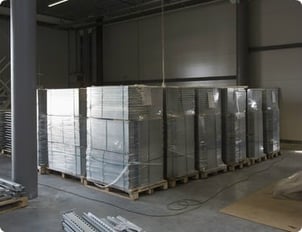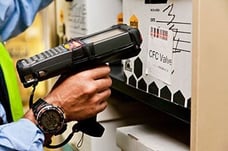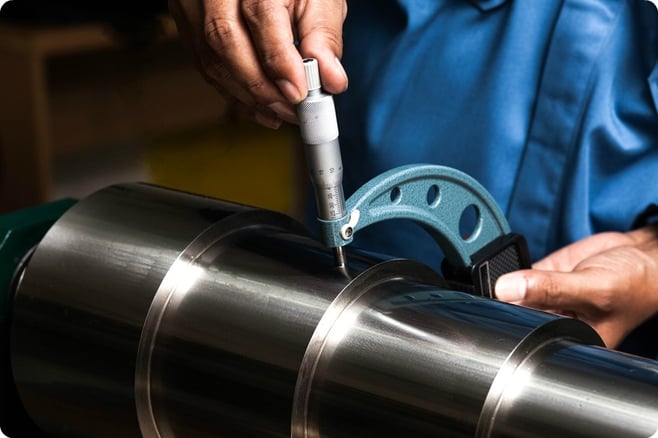In today’s competitive industrial market, high quality standards aren’t optional. Your customers expect consistently high quality in your products. If you don’t meet their expectations, you’ll probably find it difficult to retain their business and attract new customers.
For many industrial companies, the biggest challenge in ensuring quality arises after the product leaves their facility. You can control what happens in your building. You can develop a production process that maximizes quality and consistency. You can implement a quality assurance process that identifies issues and defects before your products leave the building.
You can’t control the actions of truck drivers or container handlers, and you certainly can’t control the weather.
However, once your product is in a crate and in-route to your customer, you may feel like quality assurance is beyond your grasp. Any number of incidents could threaten quality. A particularly bumpy ride could cause movement or vibration in the crate. The temperature in the vehicle could fall outside the acceptable range, possibly damaging your product. There could be moisture or other elements in the vehicle. Or your product could simply be mishandled on the receiving end.
All of these examples, and more, are real threats. You can’t control the actions of truck drivers or container handlers, and you certainly can’t control the weather. So how can you ensure the quality of your industrial product after it leaves your building?
Fortunately, there are many steps you can take to minimize risk. Below are a few tips to help you manage potential threats and protect your product’s quality. If you haven’t considered these steps in the past, now may be the time to do so.
Rethink your materials.
The wood crate has long been the most commonly used shipping container for industrial and manufacturing companies. There are plenty of great reasons why a wood crate makes sense. They’re often affordable. They can usually be built in a wide range of sizes, and you may be able to use recycled materials.
 Most of all, wooden crates are a simple solution. You assemble the crate or purchase crates from a packaging company. Then you fill the empty space with dunnage and load the container on a truck. For the right product and process, a wood crate can be an efficient and cost-effective solution that also protects quality.
Most of all, wooden crates are a simple solution. You assemble the crate or purchase crates from a packaging company. Then you fill the empty space with dunnage and load the container on a truck. For the right product and process, a wood crate can be an efficient and cost-effective solution that also protects quality.
A wooden crate may not be the best option for every job, though. There are many other materials that can be used in a cost-effective way to provide a greater level of protection, depending on your needs and objectives.
One example is engineered metal, which can often be purchased affordably and can provide a greater barrier to sunlight, moisture, heat, and other elements. Another example is plastic. Often, plastic can be engineered to provide a tight fit around your product. Plastic packaging can also be used as a rotable, or reusable, container, minimizing your need to buy and assemble new packaging for each shipment.
A wooden crate may be the right solution in many instances. However, be sure to explore other options. A packaging consulting company can examine your product’s shipping risks and advise on exactly what type of material - wood or otherwise - will provide the greatest level of protection.
Bring in a packaging engineer.
How much engineering and development labor hours were put into your production process? How much time do you and your team spend developing production solutions that elevate and ensure quality? Probably more time than you can count.
Have you put the same effort into engineering packaging and shipping solutions that protect quality. The truth is that packaging is often a function that requires a high level of specialized experience and knowledge. Packaging engineers can identify risks and solutions that you may not even be aware of.
Experienced packaging engineers aren’t in high supply, and it may not be efficient for you to hire one full-time. Instead, consider partnering with a packaging company that has a team of packaging engineers. Their team can evaluate your entire process and your package design, and then present an alternative that minimizes risks and protect your product quality.
Embrace technology.
Technology is rapidly evolving, and it’s revolutionizing the way many industrial companies operate. It can also impact your packaging and shipping functions in a profound and positive way.
 One technological solution is GPS. You may already use GPS to track a shipment’s location. However, did you know that GPS can also be used to monitor vibration, temperature, humidity, moisture levels, air pressure, and more? You can use GPS technology to monitor the condition of your package in real time.
One technological solution is GPS. You may already use GPS to track a shipment’s location. However, did you know that GPS can also be used to monitor vibration, temperature, humidity, moisture levels, air pressure, and more? You can use GPS technology to monitor the condition of your package in real time.
Another potential solution is photo documentation. This allows you to take pictures of products as they are being packaged. Those pictures are then saved and shared with your customer or anyone else who may be receiving the container. If the recipient discovers a quality issue, you can refer back to the photo documentation to determine whether the issue existed when it left your facility or if it happened later.
Photo documentation can’t prevent quality issues from happening. However, it can reduce your risk exposure and protect your reputation.
Work with a packaging partner.
You could implement these steps and many others on your own. However, why spend precious time and resources on packaging tasks when your competency lies elsewhere? Instead, consider working with a packaging partner who can analyze your process from beginning to end and recommend solutions.
They may redesign your packaging or engineer a new packaging process. They could implement technology that reduces risk or reorganize your distribution and logistics to eliminate threats. Most importantly, they can analyze your packaging and shipping comprehensively and identify areas for improvement.
Quality is important to you and to your customers. You’ve invested the time, energy, and resources to produce a quality product. Don’t risk that investment with a packaging and shipping process that doesn’t provide full quality protection. ![]()






Let Us Know What You Thought about this Post.
Put your Comment Below.